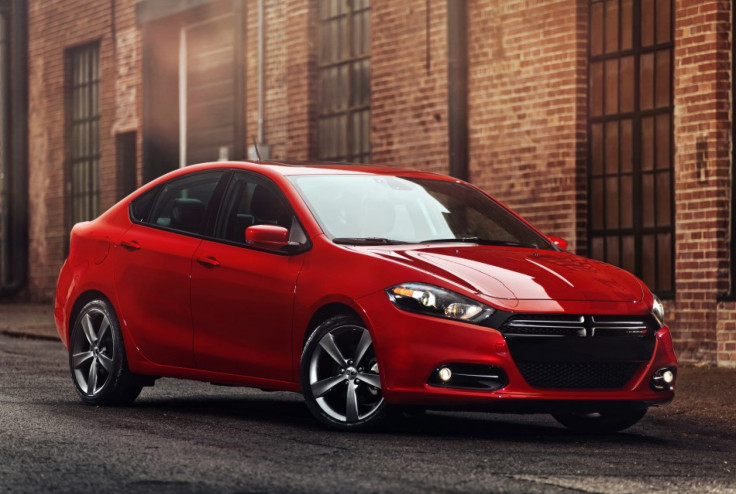Detroit Auto Show 2012: Big Three, U.S. Momentum on Display with Big Introductions

DETROIT -- As the music blared and the Dodge Dart rolled out to its debut, the stage shook underneath Dodge CEO Reid Bigland's feet before he stepped off.
I just got off the stage on time, Bigland said, joking upon hopping back on to introduce the features of the 2013 Dart, Dodge's entry into the compact car market. I would've fallen through the ground here.
It was a grand stage all day for the Big Three U.S. automakers of Dodge's Chrysler, Ford and General Motors. Fresh off momentum from strong sales and unthinkable rebounds in 2011, the mood stayed lighthearted while the companies introduced bold new additions to their lineups, as well as intriguing concept vehicles.
Just more than two years ago, all three companies at least teetered on the brink of bankruptcy. All three were bailed out in some form by the U.S. government -- Chrysler and GM through bankruptcy protection.
But in 2011, bolstered by everything from better product to the lingering effects of the earthquake and tsunami on Japanese automakers like Toyota and Honda, all three made incredulous recoveries from their previous depths. They all saw sales and market share increase dramatically from a year-to-year basis.
We remain extremely thankful for the second chance we were given a couple years ago, Bigland said Monday. Rarely in life does this happen. We've been through hell. We're not looking to go back.
In Bigland and Dodge's case, it went back to reintroduce a previously discontinued model -- the Dart -- to compete in the compact car segment, one it has neglected since the Neon in the mid-1990s.
Bigland said some of the new Dart's features came from Dodge's reexamination of the past that led Chrysler to the lows that came with the 2008 economic plunge. Specifically, he cited Chrysler's shift to producing comfortable, roomy and sleek interiors after years of cheap, plastic interiors.
We're kind of like the reformed smoker, he said. We've made some dramatic improvements over the past couple of years. As Socrates said, 'An unexamined life is a life not worth living.'
I think we've learned from our past, and we've learned from our mistakes. But we can't forget where we came from as well. We need to continue to remain humble going forward.
While Dodge and Chrysler were just entering into competition in a segment, Ford is looking to conquer one -- the midsize sedan -- with the Ford Fusion. The Fusion's market share has grown 5.2 percent since its entry in 2005, and its sales outpaced the Honda Accord this year as Ford's top-selling model.
The Fusion's new, sleek design turned heads of onlookers and analysts alike. But Edmunds.com analyst Ivan Drury said Ford shouldn't count on catching Toyota this year, and he cautioned that a redesign could be risky.
It's extremely important that they get it right, Drury told the International Business Times in a phone interview on Monday.
The Fusion has done well recently, though, he added. The pictures of it -- it's a bit sportier than I expected, but there's nothing wrong with that. If you look at the styling whims of Hyundai and Kia lately, people are becoming a little more accepting and drawn to something that's got a little more distinctive style to it.
Down the hall of the Cobo Center after the Dodge Dart made its grand introduction, Mark Reuss, president of GM North America, preached his theme of youth with the Chevrolet brand.
It's something Drury said was a smart strategy for General Motors, which has brands like Cadillac and Buick typically associated with older-generation buyers. Chevy, he said, provide an easier route for GM to bring drivers to its company at a younger age and keep them there. It's something that can expand the company's renaissance.
It all gets down to what resources and what you're focusing on, Reuss said. Sometimes, if you look at the history of the U.S. auto industry, there were times when everyone tried to be everything to everybody. That spreads things pretty thin, especially on a brand front.
If you focus on a brand basis and a model-entry basis and say, 'We're going to compete in those. We're not going to do everything,' I think you're going to do a much better job.
The U.S. industry's rebuilding has forced rival executives to take notice, like Al Castignetti, the vice president and general manager of Nissan's North American division.
Nissan, which introduced a revamped Pathfinder and an electric van concept Monday, managed to avoid the pitfalls of Japanese rivals Toyota and Honda. Castignetti said that the buzz surrounding the U.S. automakers served as much of the reason for the most impressive and competitive auto show he said he's ever attended.
Dynamically, it's changing, Castignetti said in an interview with the International Business Times on Monday afternoon. You have to be more mindful of all the other manufacturers and what products they have out there, because now the consumer really has some choices that they never would consider before.
But U.S. companies are also taking notice of their rivals. Barring another unforeseen-circumstance situation, Honda and Toyota both expect sales and market share to increase in 2012. So does Nissan.
But the momentum is hard to ignore. And so is the product.
Said Matt Liddane, the vehicle line executive of the Dodge Dart, in an interview with the IB Times: We have something now that can go toe-to-toe with all the competitors.
© Copyright IBTimes 2024. All rights reserved.



















